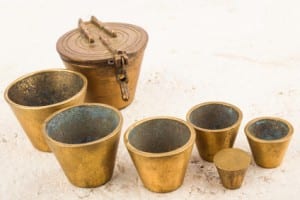 All factories, in China and elsewhere, have a minimum order quantity (MOQ). If you want big volumes, there’s no problem, but if you want low quantities, things can get difficult very fast. It’s vital to discuss quantities as soon as possible.
All factories, in China and elsewhere, have a minimum order quantity (MOQ). If you want big volumes, there’s no problem, but if you want low quantities, things can get difficult very fast. It’s vital to discuss quantities as soon as possible.
So it’s no surprise that we at Hornet are frequently asked, ‘What’s the minimum order quantity?’ Unfortunately, as often as not we don’t know – or at least we don’t know right away.
That’s because there are so many factors which go into a minimum order quantity. We’d like to share the main ones with you.
1. MOQ depends on the product value.
Generally, low value items have a higher minimum order quantity. For example, you might want non-woven bags with your logo printed on them. The biggest cost in making these is setting up the machines and testing to get the colours and the logo right – this is a fixed cost whether you want 100 bags or 100,000 bags. The bag material itself is cheap and factory only needs one person to flick a switch to make thousands of bags, but it still has to cover the cost of setting up. If you only want a small number, the price per bag simply gets too high.
On the other hand, the materials cost for high quality packaging (say you want to present your jewellery or premium wine or homewares in a rigid shaped box with a leather-look exterior, lined with velvet and stamped with your logo in silver both inside and out) is much higher. The production process is also more labour-intensive. So overall, fixed costs are a smaller proportion of the total cost and low quantities are more practical.
2. It depends on the product specifications.
If you simply want a blue bag with a white logo, that’s easy and doesn’t require much setup.
Now imagine you specify the PMS colour for the blue and you require the logo to be positioned precisely 3cm from the top left corner of the bag, plus you want a gloss finish on the blue but not on the logo. The limitations on the blue may increase cost. Setup time increases. Quality control becomes more complex. Wastage goes up.
The same principle applies across all kinds of products.
3. It depends whether the entire order has exactly the same specifications.
Think about sizes for clothing or shoes. Colours and designs for fashion and homewares. You might order 10,000, but if you have 5 different sizes or designs, each in 4 different colours, you actually ordered 500 each of 20 different items. You have lots of low quantities, not one big quantity. That means a lot more setup and quality control work for the factory.
<Update May 2014: – our recently published page about importing clothing from China includes minimum order quantity guidelines.>
4. It depends on the factory size.
Let’s say setting up the machines to produce bags takes 30 minutes. One factory has capacity to produce 1,000 bags per hour, another can produce 10,000. You want 50,000 bags. For the first factory, that’s several days’ work and worth considering. For the second, it’s not even one full day of operation. They probably won’t be interested.
5. It depends how busy the factory is.
Then again, if they have no other orders, maybe they will consider a half-day job.
6. It depends whether there will be repeat orders.
Everyone wants a long term customer and repeat business which they know how to do. Don’t expect too much from this at first though. Unless the factories have some reason to believe in your repeat orders, or have done work for you before and see you as a steady customer, they’re more likely to focus on what is guaranteed.
Remember too that lots of repeat low quantities have higher setup overhead for the factory than one big order.
7. It depends how urgently you need the product.
If you’re willing to wait until it suits the factory’s convenience to fit in a small job around their bigger orders, they may consider a smaller quantity.
***
With all these issues to consider, you can see why it’s difficult to set minimum order quantities on the spot. It gets even harder when clients want a custom-designed product.
With over a decade of experience sourcing and importing from China, Hornet often have some idea whether low quantities are feasible for a specific product. In fact, part of our value comes from our extensive network of supplier contacts, which makes it easier and faster for us to find a suitable factory for you. That’s not just one with the right quality standards for you, it’s also one of the right size. One which will be interested in your volume.
Is minimum order quantity a headache for you? We may be able to help. Call us or email us and at the very least we’ll give you some honest feedback.
<Update September 2015:- Manufacturing in China has slowed recently. With fewer new orders coming in, factories are more flexible on terms like minimum order quantity. It may be worth revisiting some suppliers which didn’t work out before.>
